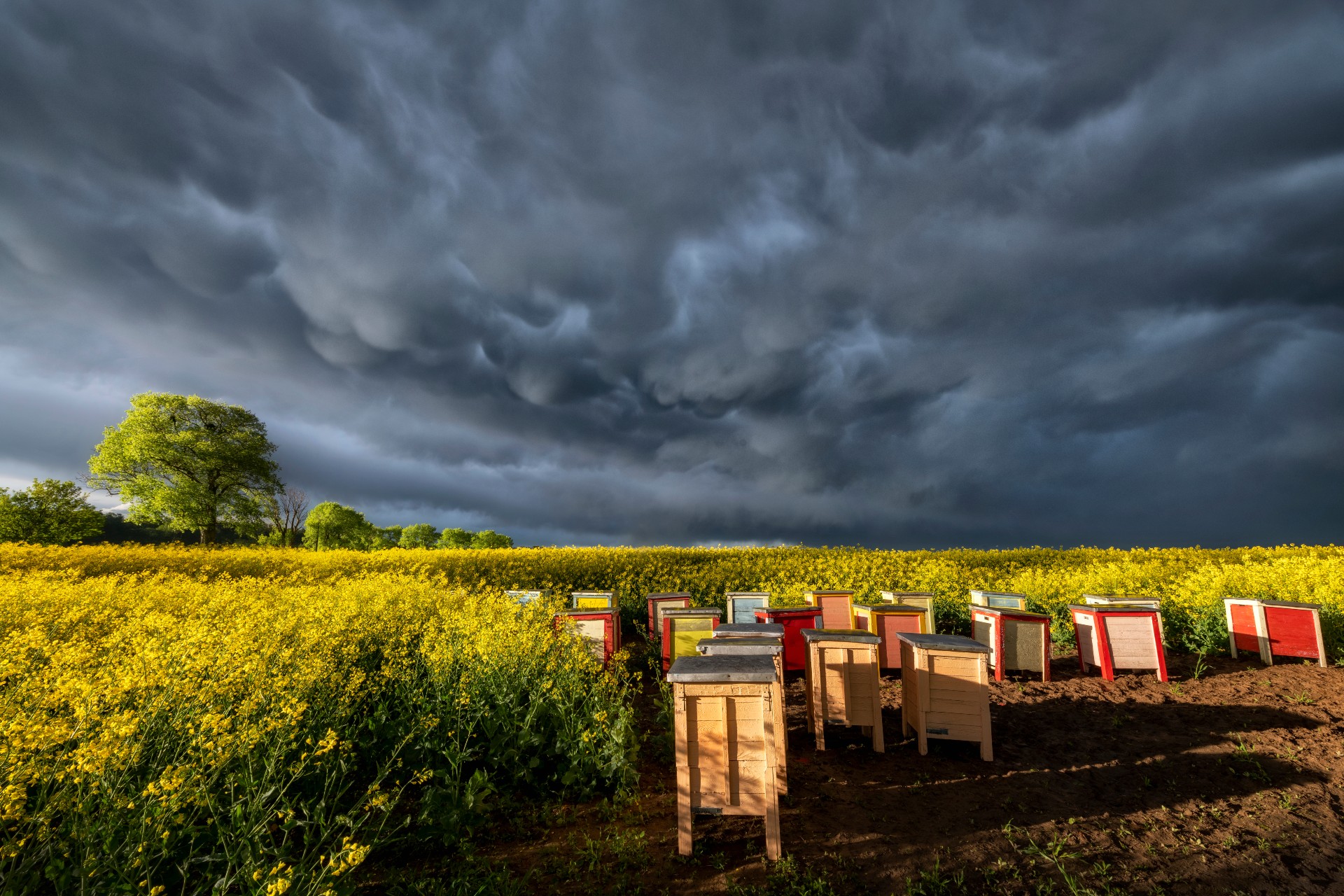Bees are known to be able to predict a storm on the way. As we enter the rainy and stormy season in many parts of the nation, knowing what to expect and recognizing different behaviors allows beekeepers to help prepare their hives for the upcoming weather. Rainstorms most often bring lightning, which can also impact the daily bee activities. Bees' wings can’t get wet, as this prevents them from flying. This is why bees often avoid foraging when a storm is expected. They don’t want to get stuck away from their hive and have to find temporary shelter or risk being suck out in the rain. When storms roll in and the wind gets going, bees also take cover, and their survival instincts are impressive.
Bees Forecast Weather
Due to bees’ survival instincts and adaptability to environmental changes, they have been studied and shown to show a connection and response to weather shifts and storms. Bees would sense a storm well before people would, and even small changes in the environment may go unnoticed by people while bees are moving and making adjustments to accommodate. Air pressure changes and rising humidity indicate to bees that a storm is on the horizon, and they need to return to their hives. Bees are tucked away well ahead of any raindrops, and their ability to sense shifts in the weather allows them to stay ahead of the threats of storms. Wings can’t get wet, and bees can’t swim, which is why bees will remain in the hive and not forage during rainstorms. Strong winds pose a significant danger to bees in flight, causing them to stay put as winds pick up.
In Preparation for a Storm
The inside of the beehive gets more active when a storm comes. Foragers are back in the hive and are sharing space when they are not all in the hive at the same time, typically. Foragers who are out collecting pollen return, and the bees collectively begin to seal the hive openings with pollen and nectar. Just as humans prepare for storms, bees also prepare, which includes protecting the queen. The efficiency and dedication of bees in preparation for storms display incredible collaboration and organization. Even unpredictable weather for humans may not be so unexpected to bees.
Bee Activity During the Storm
As a storm is outside the hive, bees will cluster and group together to keep the temperature consistent and within a safe range. Hives can’t be too hot or too cold, and the bees' wings and movement help regulate the temperature at all times. The hive's temperature staying in a safe range ensures the eggs and larvae are safe. As with all living things, reproduction is the only way to guarantee species survival, so they go to great lengths to ensure the next generation remains protected during storms.
Thunder Poses Threats to Beehives
The hive may be a refuge for bees from rain and wind during a storm, but thunder and lightning storms can pose serious threats to hives. Storms that cause flooding can devastate apiaries. After the storm, bees may behave disoriented because their orientation is off, and they may struggle or show inconsistent behaviors initially as they re-establish foraging patterns. Violent storms can be a challenge for beehives and experienced beekeepers, too. Some beekeepers may have methods they use to help bees that are hive-bound for extended periods of time, where they are unable to forage.

Get help with your beehive or bee swarm removal! Call Today 760-224-3040 Or 951-265-8292!
The Calm After the Storm
As the storm passes and the sun comes out again, bees quickly open the entrance to the hive and return to their essential tasks. Bees will begin to forage even if it takes some time to find a new route. Bees will also work overtime to make up for lost foraging time to replenish anything used or missed during their time hunkered down in the hive. Bees are resilient and have the bounce-back skills of a rubber ball.
Beekeepers check on hives following storms to ensure no damage was done, and if it was, it needs to be fixed to protect the hive. Any hives that have been known over must be placed back in the upright position, and any damage should be repaired. It is suggested to check on the bees as well, following a storm, to make sure nothing out of the ordinary has occurred as a result.
If a hive is damaged beyond repair, bees may wander and look for a safe place. This may be a new hive, or they could seek shelter elsewhere. If bees end up in your home, or you suspect they are in the structure of your home, please call the professionals to have them safely and humanely removed. D-Tek Live Bee Removal is the most recognized and respected live bee removal company throughout Southern California and Las Vegas. Call Dave at 760-224-3040 today and let him and his bee technician come out for a thorough inspection!
